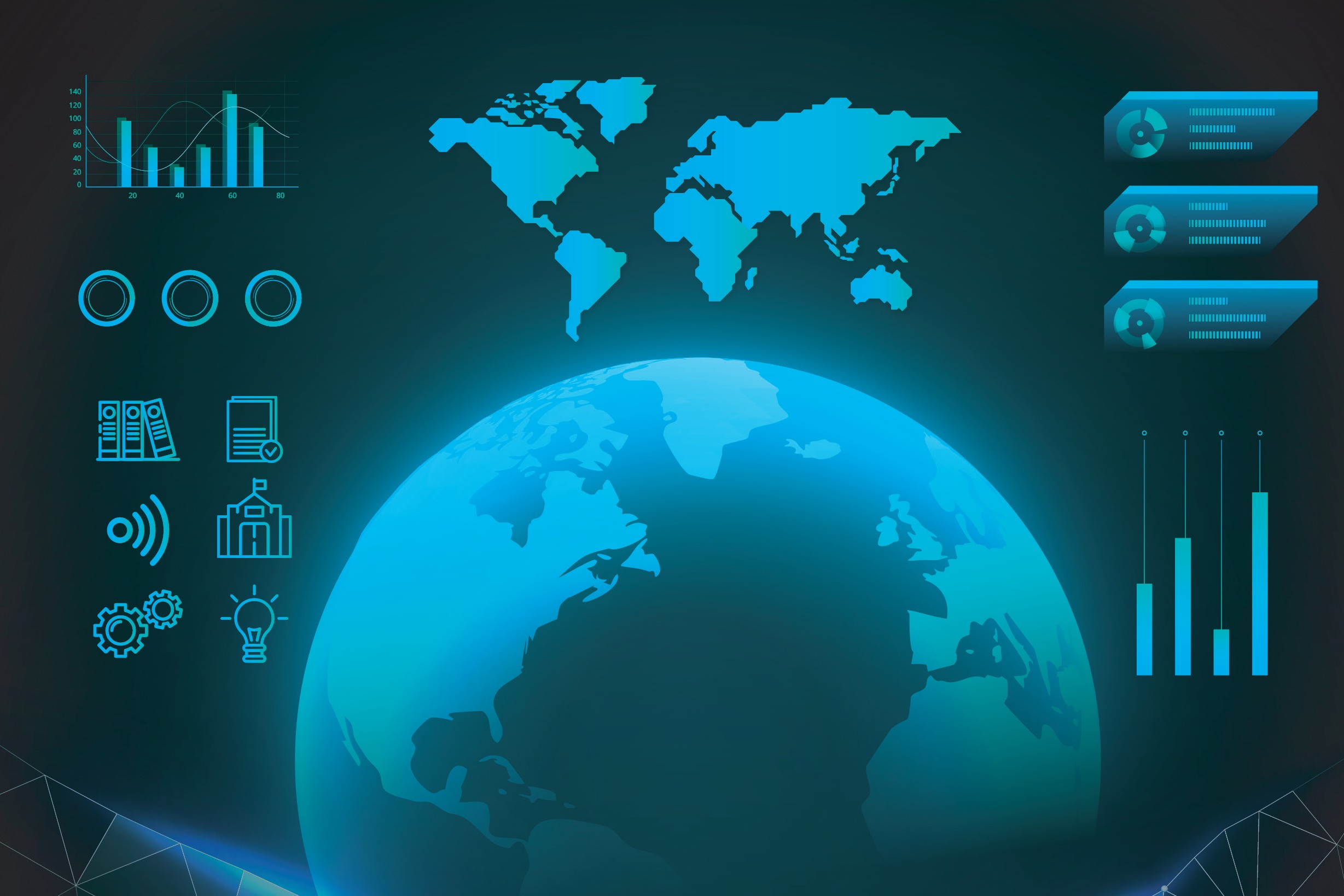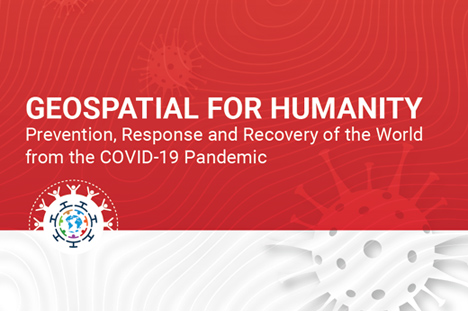Publications
The Blueprint 2.0 : Harnessing Geospatial Information and Innovation (2025)
 Since the launch of the first Blueprint in 2020 the United Nations has made significant strides in recognizing geospatial information as a strategic asset for delivering on its core mandates—from sustainable development and humanitarian response to peacekeeping and climate action.
Since the launch of the first Blueprint in 2020 the United Nations has made significant strides in recognizing geospatial information as a strategic asset for delivering on its core mandates—from sustainable development and humanitarian response to peacekeeping and climate action.
Blueprint 2.0 Harnessing Geospatial Information and Innovation for people, places and planet in 2025 outlines a renewed and forward-looking framework to guide the coordination, governance and integration of geospatial information management across the UN system through 2030, in alignment with the United Nations Data Strategy and the UN 2.0 vision for a modern, digitally enabled Organization.
The Blueprint 2.0 elaborates 3 strategic objectives and 8 transformational pathways and detailed 51 activities for the Organization to deliver as one for people, places and planet.
One UN Geospatial Situation Room (2024)
 Guided by the frameworks developed by the Committee of Experts (UN-GGIM), in particular the 14 fundamental geospatial data themes and the United Nations Integrated Geospatial Information Framework (UN-IGIF), the UN Geospatial Network continued to develop its One UN Geospatial Situation Room concept, expanding on prior document of 2022 and 2023, as a practical mechanism and platform to help coordinate the management, dissemination and sharing of geospatial information. The latest concept document details further the implementation and future of the One UN Geospatial Situation Room while working in parallel on its operationalization.
Guided by the frameworks developed by the Committee of Experts (UN-GGIM), in particular the 14 fundamental geospatial data themes and the United Nations Integrated Geospatial Information Framework (UN-IGIF), the UN Geospatial Network continued to develop its One UN Geospatial Situation Room concept, expanding on prior document of 2022 and 2023, as a practical mechanism and platform to help coordinate the management, dissemination and sharing of geospatial information. The latest concept document details further the implementation and future of the One UN Geospatial Situation Room while working in parallel on its operationalization.
One UN Geospatial Situation Room (2023)
 Further to its prior publication of 2022 and guided by reference frameworks of UN-GGIM, the UN Geospatial Network continued to develop its 'One UN Geospatial Situation Room' concept as a practical mechanism and platform to help coordinate the management, dissemination and sharing of geospatial information in the United Nations System. In particular, the One UN Geospatial Situation Room expanded on its data governance guided by the 14 fundamental geospatial data themes and toward addressing global agendas and the requirements from decision-makers, heads of agencies, and operations of the United Nations System. An initial hub of the One UN Geospatial Situation Room was built, realizing the vision set out in strategic document, the Blueprint, on a 'United Nations Geospatial Network Data Hub’ to “Deliver as One” on geospatial information and data.
Further to its prior publication of 2022 and guided by reference frameworks of UN-GGIM, the UN Geospatial Network continued to develop its 'One UN Geospatial Situation Room' concept as a practical mechanism and platform to help coordinate the management, dissemination and sharing of geospatial information in the United Nations System. In particular, the One UN Geospatial Situation Room expanded on its data governance guided by the 14 fundamental geospatial data themes and toward addressing global agendas and the requirements from decision-makers, heads of agencies, and operations of the United Nations System. An initial hub of the One UN Geospatial Situation Room was built, realizing the vision set out in strategic document, the Blueprint, on a 'United Nations Geospatial Network Data Hub’ to “Deliver as One” on geospatial information and data.
One UN Geospatial Situation Room (2022)
 The Network identified the need for a practical mechanism to help coordinate the management, dissemination and sharing of geospatial information in the United Nations System. The practical mechanism, a 'One UN Geospatial Situation Room' resides at the intersection of the global agendas, priorities of the United Nations on Data and the UN-GGIM guidance and frameworks and aims to operationalize data in moments that matters most. The 'One UN Geospatial Situation Room' guides the Priority geospatial data themes required in addressing priority agenda and the requirements from decision-makers, heads of agencies, and needs of operations and crisis faced by the United Nations System. The 'One United Nations Geospatial Situation Room’ builds on the Network ‘United Nations Geospatial Network Data Hub’ envisioned in its Blueprint and ultimately promotes synergies and enable the United Nations system to “Deliver as One” on geospatial information and data.
The Network identified the need for a practical mechanism to help coordinate the management, dissemination and sharing of geospatial information in the United Nations System. The practical mechanism, a 'One UN Geospatial Situation Room' resides at the intersection of the global agendas, priorities of the United Nations on Data and the UN-GGIM guidance and frameworks and aims to operationalize data in moments that matters most. The 'One UN Geospatial Situation Room' guides the Priority geospatial data themes required in addressing priority agenda and the requirements from decision-makers, heads of agencies, and needs of operations and crisis faced by the United Nations System. The 'One United Nations Geospatial Situation Room’ builds on the Network ‘United Nations Geospatial Network Data Hub’ envisioned in its Blueprint and ultimately promotes synergies and enable the United Nations system to “Deliver as One” on geospatial information and data.
Geospatial In Action (2021)
The 2030 Agenda for Sustainable Development, adopted by all United Nations Member States in 2015, provides a shared objective for peace and prosperity for people and the planet, now and into the future. At its heart are the 17 Sustainable Development Goals (SDGs), which are an urgent call for action by all countries - developed and developing - in a global partnership.
The Geospatial In Action: Data and Insights for the Sustainable Development Goals publication is a showcase and demonstration of the breadth and wealth of the use and contribution of geospatial information by the United Nations Geospatial Network. It shows the importance of geospatial information to the Organization and how it underpins all decision-making, supporting its mandates and actions, providing key information in moments that matter most - in the context of the SDGs - for a greater impact to the benefit of people, places and planet. The publication reviews each of the 17 SDGs in sequence to note the specific use of geospatial information and the role of the United Nations entities to provide the data and insights for action for a better world.
Geospatial For Humanity (2021)
This decade has started with instability, uncertainty, and complexity, originating from the global COVID-19 pandemic which is affecting all societies to an unprecedented extent. This humanitarian crisis is expected to disproportionately impact the most fragile populations from developing countries – poorer social classes, women and children, older generations, and those affected by conflict, or living in fragile settlements or poorly-equipped medical areas.
The Geospatial for Humanity: Prevention, Response and Recovery of the World from the Pandemic COVID-19 publication of the United Nations Geospatial Network aims to provide a selection of geospatial activities and support across the United Nations system of actions to fight for humanity. The UN geospatial community stands ready to act and further contribute to address global crisis and raise awareness of these activities in our drive to prepare humanity for a better future.
Generic Job Description for Geospatial professions (2021)
 To mainstream geospatial professions, better reflect the geospatial expertise and facilitate career progression within the United Nations system, the Network discussed and elaborated generic job titles and duties for geospatial professionals. Guided by the activities of the Blueprint and the Network’s work programme, the generic job description profiles were established and consolidated using a wide array of references from Member States, geospatial societies, private sector, and heterogeneous profiles from the United Nations system. The generic job profiles were reviewed and approved by the Office for Human Resources Management of the United Nations Secretariat.. These Generic Job Description for Geospatial professions for the United Nations system are now a reference, presented at the Eleventh Session of UN-GGIM, and provides for a consistent and coherent approach to publicize and recruit geospatial professionals in the United Nations System.
To mainstream geospatial professions, better reflect the geospatial expertise and facilitate career progression within the United Nations system, the Network discussed and elaborated generic job titles and duties for geospatial professionals. Guided by the activities of the Blueprint and the Network’s work programme, the generic job description profiles were established and consolidated using a wide array of references from Member States, geospatial societies, private sector, and heterogeneous profiles from the United Nations system. The generic job profiles were reviewed and approved by the Office for Human Resources Management of the United Nations Secretariat.. These Generic Job Description for Geospatial professions for the United Nations system are now a reference, presented at the Eleventh Session of UN-GGIM, and provides for a consistent and coherent approach to publicize and recruit geospatial professionals in the United Nations System.
The Blueprint: Geospatial for a Better World (2020)
Geospatial information, technology and services can support efforts to maximize the value of our data, for better decisions and deliver stronger support to people, places and planet, and address the Organization priorities as set out in the United Nations Charter and global agendas such as the implementation and monitoring of the Sustainable Development Goals (SDG), Sendai Framework, Paris Agreement on Climate Change, Small Islands Developing States Accelerated Modalities of Action or when addressing a global events such the pandemic crisis (COVID-19). Leaving no one behind.
The Blueprint Geospatial for a Better World: Transforming the Lives of People, Places and Planet present the Strategic Design and orientations of the United Nations Geospatial Network to ensure the Network realizes its goals. The document aims to guide and organize the work of the Network by detailing aim, collective objectives and activities. The realization of the objectives of the Network through the Blueprint is structured in the three strategic objectives, seven transformation pathways and detailed through 50 activities. The Blueprint is guided by the Integrated Geospatial Information (IGIF), the Data Strategy of the Secretary-General, the Secretary-General’s Strategy on New Technologies and the Workplan of the Network.
The Blueprint: Geospatial Landscape in the UN system (2020)
Many offices, departments, specialized agencies, funds an programmes of the United Nations system have used geospatial information in support of the delivery of their respective mandates.
The Blueprint Geospatial Landscape of the United Nations system aims to provide an overview and resource on the current geospatial mandates, activities, personnel, data usage, infrastructure and resources across the whole United Nations system.






